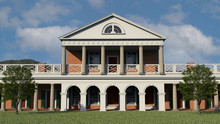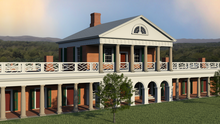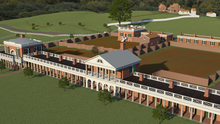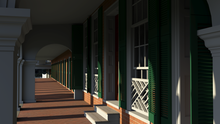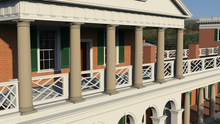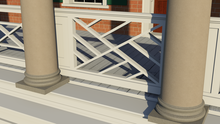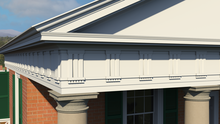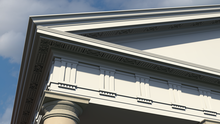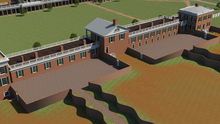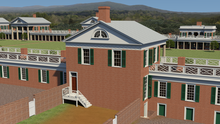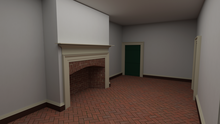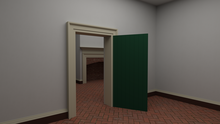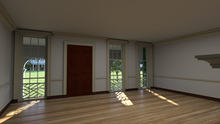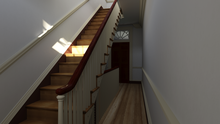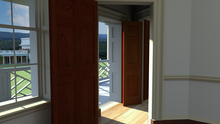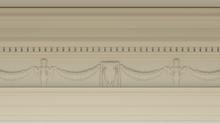Pavilion VII was the first building to be built at the University of Virginia. Construction on the pavilion began in 1817 and was completed in 1819. It is also home to the University's cornerstone, laid on October 6th, 1817 by President James Monroe with former presidents James Madison and Thomas Jefferson also in attendance. The final design of the pavilion is very similar to the designs that Jefferson had been drawing for his Central College for several years already and represents Jefferson's first thoughts on this subject of architecture, before being influenced by the styles of Benjamin Latrobe and William Thornton. Often referred to as the "Doric Pavilion," the design is based on the Palladian Doric Order, which can be clearly seen on Plate 5 of Chambray's 1766 book Parallèlle de l'architecture antique avec la moderne. At the time of the University's opening on March 7th, 1826, Pavilion VII was the smallest of Jefferson's ten pavilions and was the temporary home of the University library until the completion of the Rotunda.
While the front facade of Pavilion VII remains largely unchanged from Jefferson's time, the rest of the building has undergone extensive renovations. A small addition was added to the back during the mid-1800s, and a much larger annex with north and south wings was completed around 1912. In addition to beautiful meeting spaces and a small library, Pavilion VII also was given several guest rooms for overnight visitors to the University. Almost a century later, in 2001, a major restoration effort was completed that returned the historical interior back to its original appearance (an endeavor that included the uncovering of the front door, which had been long since plastered over). Pavilion VII never did function as a professor's home and lecture hall, as Jefferson had intended, but instead sits today as the home of the Colonnade Club, a social club for faculty, staff, and alumni of the University.
See also:
|
Pavilion VII east facade |
Pavilion VII front facade from southeast |
Pavilion VII aerial view |
|
Pavilion VII under the arcade |
Pavilion VII view from roof terrace... |
Pavilion VII balcony |
|
Pavilion VII balcony railing |
Pavilion VII cornice |
Pavilion VII soffit detail |
|
Pavilion VII aerial view of rear facade |
Pavilion VII rear facade |
Pavilion VII Interior - Basement Kitchen |
|
Pavilion VII Interior - Basement Pantry |
Pavilion VII Interior - Classroom... |
Pavilion VII Interior - Classroom... |
|
Pavilion VII Interior - Entry Hall... |
Pavilion VII Interior - Entry Hall... |
Pavilion VII Interior - Bedroom looking... |
|
Pavilion VII Interior - Vestibule from... |
Pavilion VII Interior - Upstairs Parlor |
Pavilion VII Interior - Parlor cornice... |
